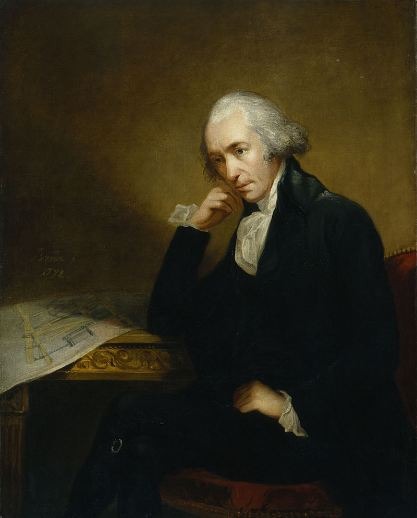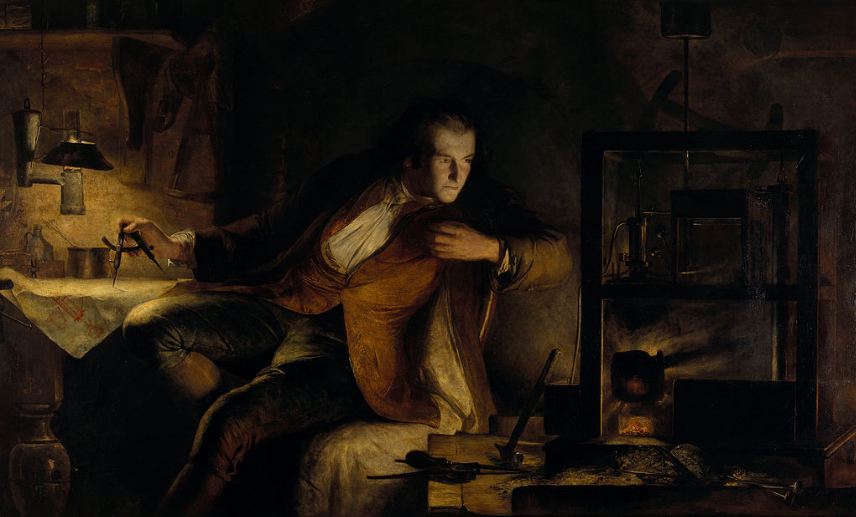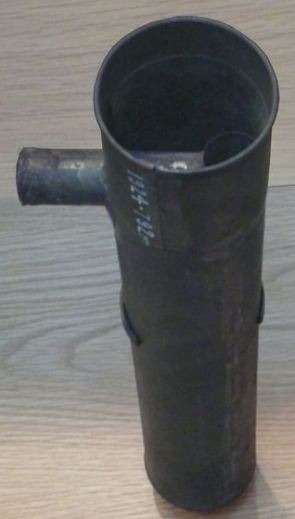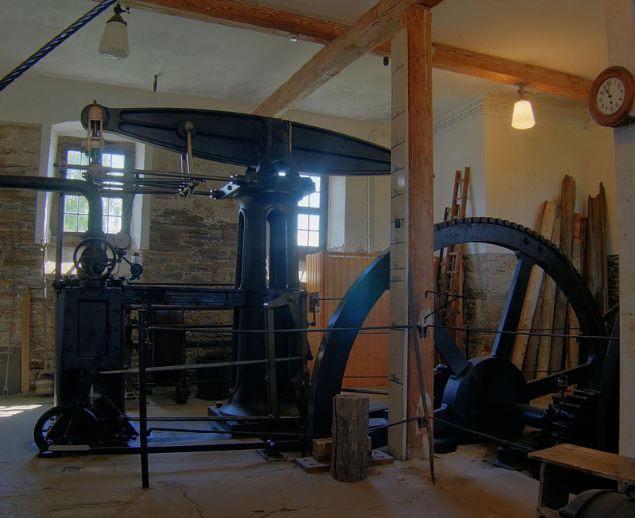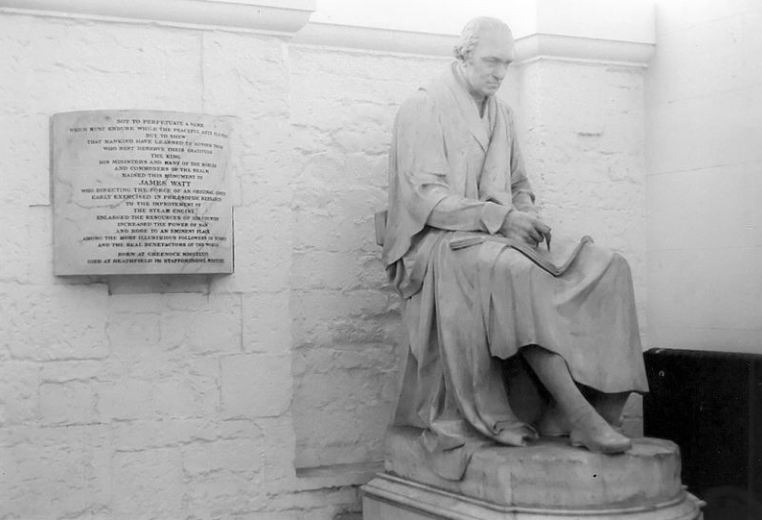Born in 1736, James Watt was a Scottish inventor, chemist, and mechanical engineer. He was one of the most acclaimed individuals of his time mostly credited for improving Thomas Newcomen’s 1712 Newcomen steam engine and coming up with his Watt steam engine in 1776.
The Watt steam engine was fundamental to the industrial revolution and brought significant changes not only to Great Britain but also to the rest of the world. Watt’s journey to becoming one of the most successful scientists is as interesting as his inventions. So let’s discuss what made him go down the history books.
Early Life and Education
James Watt was born in Greenock, Renfrewshire in 1736 to Agnes Muirhead and James Watt. According to the profile of James Watt family, he was the eldest of the five surviving children. Watt’s mother was said to be well-educated, belonged to a distinguished family while his father was a shipowner, contractor, and shipwright.
He had also served in the Greenock’s chief bailie in 1751. Adding a bit about James Watt’s parents, that they were Presbyterians and strong Covenanters, however, despite being brought up religious, he went onto become a deist.
Initially, Watt was schooled by his mother at home and then later went on to join the Greenock Grammar School. While studying there, he showed interest and an aptitude for mathematics while both Greek and Latin failed to provoke his interest. Watt is said to have suffered from severe illnesses as a child and also experienced frequent headaches all his life.
His father owned workshops since he dealt with ships for maintenance and repairs etc. After leaving school, Watt used to work in the workshops as well and showcased extreme skill and dexterity in creating engineering models. Upon his father being unsuccessful in his business ventures, Watt left for Glasgow to seek employment as a mathematical instrument maker.
Biography
At the age of 18, Watt’s mother died and his father’s health began to fall. He traveled to London and gained a bit of training as an instrument maker. Then, he returned to Scotland and settled in the major commercial city of Glasgow with intentions to set up his own instrument-making business.
At the time, he was very young and due to not having an official mater-student relationship, couldn’t develop any connections helping him establish as a journeyman instrument maker.
However, that wouldn’t stop Watt from becoming what he was supposed to. Watt’s information, knowledge, and expert attention came to use when astronomical instruments from Jamaica arrived at the University of Glasgow. Watt worked on these instruments and brought them back to working conditions while being remunerated.
The restored instruments were then installed in the MacFarlane Observatory. Then, three professors offered him to set up a small workshop within the university. The workshop project was initiated in 1757 and the two professors, Joseph Black, and Adam Smith became friends of James Watt. Part of the reason we know so much about James Watt and his invention is because the same friends played a huge role in helping him achieve his goals.
In the beginning, James worked on maintaining and repairing the instruments used by the university, helping with demonstrations, and expanding the production of quadrants. His skill allowed him to make and repair parallel rulers, brass reflecting quadrants, parts for telescopes and scales, etc.
At the time, there was a rumor surrounding James Watt that he struggled to establish himself in Scotland due to opposition from the Trades House. However, that rumor has been debunked several times by historian Harry Lumsden.
The year 1759 saw James signing a partnership with John Craig who was a businessman and architect. The partnership was about making and selling a line of musical instruments and toys. The partnership lasted six years until the death of Craig in 1765. It employed 16 workers and one employee by the name of Alex Gardner took over the business, carrying it into the 20th century.
Watt and the Kettle
There is a popular story about James Watt getting initial inspiration for his steam engine by observing a kettle boiling. He saw steam forcing the lid open and realized its potential. There are several variations of the story. In some, he is a young lad, while in others an old individual.
Some say the kettle belonged to his mother, while others say it was his aunt’s. Regardless, James was not the inventor of steam engines. He simply refined the already existing Newcomen engine by including a separate condenser.
Even though many consider it a myth but James conducted several laboratory experiments to understand the thermodynamics of heat and steam. As a result, he used a kettle as a boiler to generate steam.
Early Experiments with Steam
In 1759, Watt’s friend John Robinson provoked his attention to the use of steam. At the time, the Newcomen engine was the only engine that existed and no significant changes or additions had been made for almost 50 years.
As a result, Watt began experimenting with steam to come up with his version commonly referred to as the James Watt engine, although he had not seen an operating steam engine before.
Watt was clearly not familiar with the basics of a steam engine or the importance of latent heat i.e. thermal energy. Therefore, he gained as much information and knowledge as he could and soon realized that thermal energy was something his friend Joseph Black had discovered years before.
The year 1763 saw Watt being asked to repair a Newcomen engine that belonged to the university. Despite the repairs, the engine barely worked. After conducting several experiments, Watt concluded that the engine was wasting three-quarters of its thermal energy.
Instead of turning it into mechanical energy, the thermal energy was being wasted due to cold water injected into the cylinder to condense the steam and reduce its pressure. In 1765, Watt stated that the steam needed to condensate in a separate chamber so that the temperature of the cylinder could be maintained at the same temperature as the injected steam, which was done by surrounding it with a “steam jacket”.
As a result, very little energy was absorbed, allowing more energy to be available to perform useful work. Watt came up with a working model the same year. And although Watt had a workable design, there were still some difficulties during the process. He needed to gather enough capital and financial backing. He managed to cover all that but the principal complexity was related to machining the piston and cylinder.
At the time, the blacksmiths were not trained or skilled to produce precise components. Therefore, much of the capital was spent on finding the right materials, individuals, and most importantly, inventions.
Eventually, Watt was able to make it through the complexities, and the first engines were installed in commercial enterprises in 1776. Furthermore, these engines were commercially successful and for the next five years, Watt would see himself very busy installing other engines.
It should be noted that these early engines were not manufactured by Watt himself. Instead, the manufacturers used Watt’s drawings who served as a consulting engineer. Over the years, Watt made significant improvements and modifications to the steam engine.
Patent Trials
In 1781, Edward Bull began constructing engines for Boulton and Watt in Cornwall. By 1792, he began producing his own engines but adding a separate condenser, therefore, infringing Watt’s patents. Several other individuals also jumped on the bandwagon and began producing engines by adding a separate condenser stating that Watt’s patents could not be enforced.
As a result, they started to overlook and ignore payments made to the Boulton and Watt. In total, 21,000 pounds was owed to the company but only 2,500 was received. As a result, Watt was forced to go to court.
Bull was the first one to be sued in 1793. Eventually, the jury as well as the judges favored Watt and he won the cases. Although several other disputes were much more complicated but Watt and his company were able to settle them.
Additionally, the firm was not able to collect the amount it was owed. It settled the case and signed agreements directly with the parties. It cost the firm a lot interms of money and time but eventually was beneficial.
Copying Machine

He instead started working on some ink from the front of the original to the back of another. For that, the second sheet needed to be thin so that the ink could be seen through it when the copy was held to the light, reproducing the exact original.
The year 1779 saw Watt starting to develop the process. Many experiments went into the process but he managed to patent the process a year later. His experiments led him to formulate the ink, selecting a thin paper, devising a method for wetting the special thin paper, and coming up with a suitable press to apply an adequate amount of pressure so that the transfer is made effectively.
Watt developed a partnership with Boulton and James Keir. The partnership was done to perfect the invention before it could be used by others. As a result, the refinement took place over the new few years and became a commercial success. Infact, it was also used in the 20th century.
Chemical Experiments
Apart from being interested in engineering and designing, Chemistry also caught his attention. While he was in Paris, he saw Berthollet perform an experiment involving the reaction of hydrochloric acid with manganese dioxide to produce chlorine. Upon returning to Britain, Watt also began conducted experiments on the same lines, hoping to find more viable solutions.
Soon, he found that chlorine could also be produced by mixing manganese dioxide, salt, and sulphuric acid, which could be cheaper. He shared his invention with James McGrigor, his father-in-law who was a bleacher at the time in Glasgow. Otherwise, he kept it a secret.
With the help of McGrigor and his wife Annie, Watt expanded the process and was able to bleach 1500 yards of cloth in 1788. Meanwhile, Berthollet had also discovered the salt and sulphuric acid process and published it so that the public could gain knowledge. Soon many rivals jumped into the spotlight and Watt was left behind. However, there were many shortcomings, most importantly related to the transfer of the liquid product.
Later Years
In 1800, Watt retied. This was the same year when his fundamental patent and partnership with Boulton expired as well. The famous partnership was now in the hands of their sons. William Murdoch later joined the firm as a partner, which further helped it progress. Although Watt had retired but he never stopped working on new inventions.
While living in Handsworth, Staffordshire, Watt made a workshop out of garret room and mostly spent his time working on many of his inventions. Amongst his several inventions, he came up with machines that could copy sculptures and medallions.
The machines were a success but he never patented them. One of the first sculptures he produced using the machine was a small head of his professor friend Adam Smith. Before passing away in 1819, Watt traveled to France and Germany and ended up purchasing a property, making much improvements.
Final Word
Considering his achievements and inventions, James Watt was one of the scientists who was ahead of his time. To honor his legacy, several statues were raised and he was buried in the grounds of St. Mary’s Church in Handsworth.
His experiments and passion for engineering led to the introduction of some of the most practical inventions at the time. And although centuries have gone by since his death, his name is the first to come up whenever steam engines or other related inventions are discussed.

